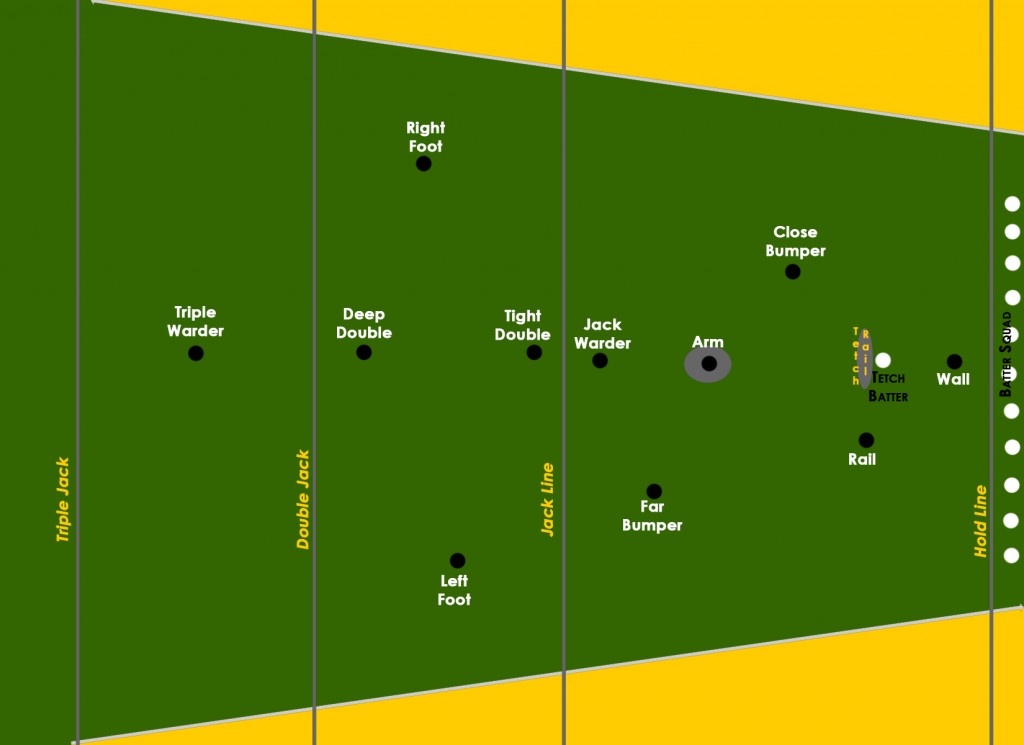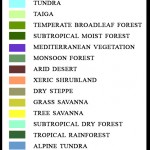So, I'm well into the process of writing the third Thorn book of the Maradaine novels, and part of that involves an ongoing tetchball tournament. Tetchball had been mentioned in Thorn and elsewhere as a popular sport in Maradaine, but what exactly is it?
The easiest way to describe tetchball is that it's sort of the bastard child of cricket and rugby.

The field consists of a long rectangle, with the "green" of the field marked with a trapezoid. The two out-of-bounds areas on either side are referred to as "the yellow"-- and on some fields they will go so far as to paint the grass to mark it. The field is then crossed with four lines to mark the different sections of the playing zone: The Hold Line, The Jack Line, The Double Jack and the Triple Jack.
There are two teams of eleven players each. Each match is played in three intervals, and each interval is split into the Top and Bottom. In the Top, one team takes the field (Fielding Team) while the other one (Batting Team) lines behind the Hold Line, and in the Bottom they switch places.
The eleven players take the field in their designated places: The Arm in the Arm's Circle, and in the zone between the Hold Line and the Jack Line (First Zone) : The Rail, The Wall, The Close Bumper, The Far Bumper and the Jack Warder. In between the Jack Line and the Double Jack (Second Zone) are the Tight Double, Deep Double, Left Foot and Right Foot. Finally, in the Third Zone, between the Double Jack and the Triple Jack, is the Triple Warder.
In each interval, the Batting Team sends one player at a time to the Tetch Rail, a beam of wood about four feet long, resting on two posts. The Batter stands behind the rail with a Tetchbat, ready to bat. The Arm takes the Tetchball (a big larger and softer than a softball) and pitches it over the tetchrail for the batter to try to hit it. The batter gets two pitches to try to hit the ball.
If the batter misses both pitches, they return behind the hold line and the next batter comes forth.
If the batter hits the ball, then the batter will start to run-- first through the rail, knocking it to the ground, and then towards the Jack Line. Their goal is to run past the Jack Line, past the Double Jack and to the Triple Jack, and then turning around and running back to the Hold Line, all before the tetchrail is restored. Restoring the rail means that the beam is back in place on its posts, and the ball is being touched to the rail. Each line cross gains the runner one point for their team, for a maximum of six points for each batting.
What the Fielding Team can do to stop him depends on where the ball lands. Players in any zone are frozen if the ball lands past their zone, until the batter runs past that line. In other words, if the ball lands in the Second Zone (a "Jack Hit"), then the players in the First Zone can do nothing until the batter runs past the Jack Line. If the Batter hits a Triple Jack-- the ball lands past the Triple Jack Line, beyond any of the playing zones, then all the fielders are frozen until the batter reaches the Triple Jack Line. If the ball lands in the Yellow, then the Batter must return behind the Hold Line and the next batter comes up.
All Fielders must stay in their respective zones at all times, save the Triple Warder, who can cross the Triple Jack line if they are not frozen.
While the batter is running, four players have a primary goal of impeding his run: The Close and Far Bumpers, and the Right and Left Feet. If they are free to move, they can grapple and hold the batter to keep him from running. For the Jack Warder, the Tight and Deep Doubles and the Triple Warder, their primary goal is to get the ball back to tetchrail so the rail can be restored. Restoring the rail is the responsibility of the fielder playing Rail, though it is acceptable for the Arm and the Wall to assist in this. It should be noted, though, that any player that is free to move can both handle the ball and grapple the running batter, as long as they do not cross out of their zones.
If the ball ever crosses the Hold Line, then the Hold is broken, and all of the Batting Team can rush the field while the Batter runs. Only the Batter can score points, but every other player can impede the fielding team from stopping the Batter or restoring the Rail, as long as they do not touch either the rail or the ball.
The Wall's primary job is to make sure the ball does not cross the Hold Line.
Each interval is concluded when every player on both teams have had a turn at bat. Once three intervals have been played, the match is concluded. The team with the most points is the winner.
Any questions?

